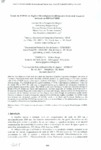Use este identificador para citar ou linkar para este item:
http://www.alice.cnptia.embrapa.br/alice/handle/doc/491976Registro completo de metadados
| Campo DC | Valor | Idioma |
|---|---|---|
| dc.contributor.author | OLIVEIRA, L. M. T. de | pt_BR |
| dc.contributor.author | FRANÇA. G. B. | pt_BR |
| dc.contributor.author | COSTA, T. C. e C. da | pt_BR |
| dc.contributor.author | ANTUNES, M. A. H. | pt_BR |
| dc.contributor.author | FRANÇA, J. R. de A. | pt_BR |
| dc.date.accessioned | 2011-04-10T11:11:11Z | pt_BR |
| dc.date.available | 2011-04-10T11:11:11Z | pt_BR |
| dc.date.created | 2009-06-23 | pt_BR |
| dc.date.issued | 2009 | pt_BR |
| dc.identifier.citation | In: SIMPÓSIO BRASILEIRO DE SENSORIAMENTO REMOTO, 14., 2009, Natal. Anais... São José dos Campos: INPE, 2009. | pt_BR |
| dc.identifier.uri | http://www.alice.cnptia.embrapa.br/alice/handle/doc/491976 | pt_BR |
| dc.description | The objective of this work is to study the behavior of Brazilian vegetation throughout time series of Fraction of Photosynthetically Active Radiation (FAPAR) absorbed by a plant canopy derived from vegetation index of the A VHRR sensor; observing the variations of the types of vegetation, influences and relationships with the cIimate. The F AP AR dataset has spatial resolution of 0.1 °xO.1 o and temporal resolution of 10 days for the period 1982 to 1999. The data were investigated considering the seasonal and interannual variations for phytoecological regions of the country. The FAPAR results show: the largest values were observed in Evergreen Broadleaf Forests (Dense and Open) and Campinarana, the lesser amplitude of variation of FAPAR occur in Savanna and Savanna-Steppe, due to adaptation to environmental changes. Analyses of F AP AR demonstrate that ecosystems with ali strata and structured soil have higher values. Even though, the preliminary results confirm that exists evidences ofrelation between the behavior of the FAPAR and weather conditions. The ENSO events have influence on interannual variations of FAPAR, mainly in the North and Northeast. Furthermore, the discussion presents that the FAPAR has potential to be used as an indicator of the photosynthetic process and consequently in the monitoring ofprimary production. | pt_BR |
| dc.language.iso | por | pt_BR |
| dc.rights | openAccess | pt_BR |
| dc.subject | Phytoecological regions | pt_BR |
| dc.subject | A VHRR | pt_BR |
| dc.subject | F AP AR | pt_BR |
| dc.subject | Regiões fitoecológicas | pt_BR |
| dc.subject | Tempo | pt_BR |
| dc.title | Estudo da FAPAR em regiões fitoecológicas brasileiras através de série temporal derivada do NDVI/AVHRR. | pt_BR |
| dc.type | Artigo em anais e proceedings | pt_BR |
| dc.date.updated | 2018-05-29T11:11:11Z | pt_BR |
| dc.subject.nalthesaurus | weather | pt_BR |
| dc.format.extent2 | p. 2855-2863. | pt_BR |
| riaa.ainfo.id | 491976 | pt_BR |
| riaa.ainfo.lastupdate | 2018-05-29 -03:00:00 | pt_BR |
| dc.contributor.institution | Luciana Maria Temponi de Oliveira, IBGE; Gutemberg Borges França, UFRJ; THOMAZ CORREA E CASTRO DA COSTA, CNPMS; Mauro Antonio Homem Antunes, UFRRJ; José Ricardo de Almeida França, UFRJ. | pt_BR |
| Aparece nas coleções: | Artigo em anais de congresso (CNPMS)  | |
Arquivos associados a este item:
| Arquivo | Descrição | Tamanho | Formato | |
|---|---|---|---|---|
| EstudoFAPAR.pdf | 8,65 MB | Adobe PDF |  Visualizar/Abrir |









